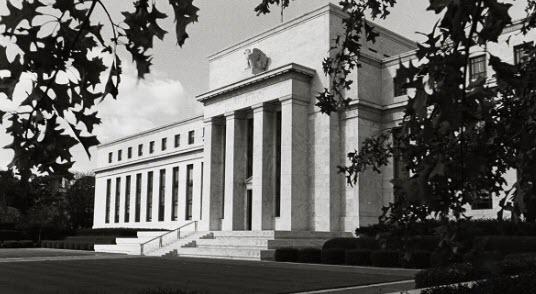
The paper titled "Making Sense of National Debt" explains the pros and cons of national borrowing in typical Keynesian fashion. In a nutshell, a little debt is a good thing, but too much debt can become a problem.
But in the process of explaining national debt, Wolla and Frerking stumble into an ugly truth — Federal Reserve money printing can destroy a country's economy.
So, when does the national debt become a problem?
According to Wolla and Frerking, debt only becomes an issue when it outpaces GDP, or national income, as they call it. If debt grows at a faster rate than income, eventually the debt might become unsustainable.
They note that according to the GAO, the US national debt is on an unsustainable path.
The federal debt is projected to grow at a faster rate than GDP for the foreseeable future. A significant portion of the growth in projected debt is to fund social programs such as Medicare and Social Security. Using debt held by the public (instead of total public debt), the debt-to-GDP ratio averaged 46 percent from 1946 to 2018 but reached 77 percent by the end of 2018. It is projected to exceed 100 percent within 20 years."
Note that the total public debt is even higher. Most analysts put the total debt to GDP ratio at around 105%.
As Wolla and Frerking point out, rising levels of debt elevate the risk of default. Normally, investors holding government bonds bear this risk. While governments never have to entirely pay off debt, there are debt levels that investors might perceive as unsustainable.
Enter the central bank. Wolla and Frerking explain how it can step in and "print money" in an effort to rescue the overleveraged government.
While governments never have to entirely pay off debt, there are debt levels that investors might perceive as unsustainable. A solution some countries with high levels of unsustainable debt have tried is printing money. In this scenario, the government borrows money by issuing bonds and then orders the central bank to buy those bonds by creating (printing) money. History has taught us, however, that this type of policy leads to extremely high rates of inflation (hyperinflation) and often ends in economic ruin."
The process that Wolla and Frerking describe is called debt monetization. And it's exactly what the Federal Reserve is doing today.
Last month, the Fed announced a massive bond-buying program.
The Federal Reserve will buy $60 billion in short-term Treasury bills each month. According to a statement, the purchases will continue, "at least into the second quarter of next year." That would amount to around $400 billion worth of Treasurys added to the Fed's balance sheet.
But the balance sheet will likely expand more than that. The Fed also plans to use interest it earns off its portfolio to buy more Treasurys. And as they mature, it will take that money and buy more bonds, thus pumping up the balance sheet.
Powell insists this is not quantitative easing. When he announced the plan, Powell said, "This is not QE. In no sense is this QE." But as Peter Schiff said, this is precisely QE – no matter what you call it.
Commenti
Posta un commento